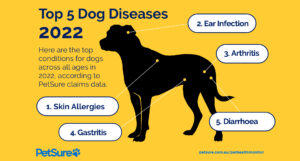Introduction
Desexing, also known as spaying for females or neutering/castration for males, is a common surgical procedure in both dogs and cats, that has the obvious benefit of preventing surprise additional family members! But if you have been wondering what exactly occurs, and what else to expect, including the risks, cost, and benefits of desexing in our best friends, read on.
The Procedure
Desexing in both male and female dogs is performed under general anaesthesia as a day procedure in most cases. The procedure itself is typically quite quick, which means a short anaesthetic for the patient. On the day of desexing, the veterinarian will generally ask for the pup patient to be fasted in readiness for the anaesthetic. Prior to the day of the surgery, the veterinarian may also have performed a blood screen to check for any anomalies that may indicate anaesthetic risk. This is often referred to as pre-anaesthetic blood testing.
Desexing Procedure for Male Dogs
The castration procedure typically involves a very small incision above the scrotum (known as a pre-scrotal incision). One by one, the testicles are gently moved out of the scrotum and exposed through the small incision. They are carefully removed, and the vessels stitched (ligated) so that they don’t bleed. The skin incision is then closed with stiches. Some people worry about the empty scrotum but in most cases, this shrinks away on healing and does not cause any problems for the dog. In some cases, particularly older dogs with larger or more pendulous scrotums it may be recommended that the scrotum is removed, which is called a scrotal ablation. Your veterinarian will be able to advise as to which procedure is best for your dog. Once the patient has woken up from anaesthetic, they are assessed for suitability to go home. They will often go home with some pain relief, and an Elizabethan collar to prevent them from chewing the stitches. The veterinarian will advise when and if the stitches need to be removed. The castration procedure is more complicated when dogs have retained testes, known as cryptorchidism.
Desexing Procedure for Female Dogs
The typical procedure for desexing female dogs in Australia involves the removal of both the uterus and ovaries. An incision is made through the skin and muscle generally around the point of the patient’s belly button (known as the midline) but some veterinary surgeons may make an incision in the side (known as a flank spay). The veterinarian will generally try to make as small of a cut as possible, but sometimes a longer cut is needed especially in large, overweight, older, or deep chested dogs. The uterus is located, and each ovary is removed, with the veterinarian carefully ligating blood vessels. Once both ovaries are removed, the uterus is then also carefully removed. The veterinarian checks many times for signs of internal bleeding before closing the abdominal layers with stiches. Spaying is a much more invasive procedure than castration, and even more so in older females, those who have had puppies, or overweight dogs. They patient will be given pain relief, and you’ll be supplied with pain relief for the patient during the recovery time at home. An Elizabethan collar may be recommended to prevent them from chewing the stitches. The veterinarian will advise when and if the stitches need to be removed.
Benefits of Desexing
There are some general benefits to desexing for dogs but remember to discuss your pets’ individual needs with their veterinarian before any procedure or treatment:
- Prevention of unwanted pregnancies
- Reduction in urine marking in male dogs
- Reduction in male dog aggression
- Reduction in mounting behaviour in male dogs
- Reduction in pyometra
- Reduction in mammary tumours
- Possible increased lifespan in females
Risks of Desexing
While there are many benefits to desexing, there can be some risks too. Always discuss the benefits and risks of any procedure with your veterinarian to determine the best treatment for your pet.
- Surgery related risks (anaesthetic risks, surgical complications, infections)
- Early desexing (under a year old) may be associated with higher risk of cranial cruciate ligament disease, hip dysplasia, and certain cancers in some breeds
- Increased risk of obesity
When is the best time to desex a dog?
Desexing for dogs is generally recommended between 5 and 9 months of age. However, the timing can vary depending on the breed, size and overall health of the dog. It is important to discuss your pet’s particular situation with your veterinarian to formulate the best plan and timing of desexing for your dog.
Desexing Alternatives
There are hormonal methods of suppressing both male and female fertility in dogs, but these are temporary. More widely adopted in male dogs, these can be very useful in treating hormone responsive prostate problems in old male dogs that would not make suitable anaesthetic candidates. Alternative surgical procedures such as vasectomies in males and ovary sparing spays in females are also not widely practiced, as both procedures mean that many of the benefits of traditional desexing are lost, particularly those associated with undesirable behaviour. There are other procedures that are unlikely to be used in practice in Australia, but if you have any concerns or questions about the procedure being used on your dog, discuss it with your veterinarian who will gladly answer your questions and set your mind at ease.
Conclusion
Desexing dogs is a procedure that offers numerous benefits. It helps prevent unwanted litters, improves certain behaviours, and can even reduce the risk of developing certain diseases. When making the decision to desex your pet, be sure to discuss the decision with your veterinarian. They will be able to help you understand the procedure itself, the benefits, potential risks and the optimal timing of desexing.
Frequently Asked Questions
The recommended age for desexing dogs varies depending on factors such as breed, size and overall health. In general, it is often advised to desex dogs between 5 and 9 months of age. However, for certain large or giant breeds, veterinarians may recommend waiting until the dog is older to allow for proper growth and development. It’s best to consult with your veterinarian to determine the most appropriate age for desexing your pup.
Desexing is performed under general anaesthesia, and administered pain relief, so that there is no pain during the surgical procedure. Pain relief is typically provided for the post operative recovery period. If you feel that your dog is experiencing pain after desexing surgery, contact your veterinarian.
Desexing increases dogs’ risk of developing obesity as the hormonal changes can alter the dog’s metabolism. It is important to adjust your dog’s calorie intake after they are desexed and to prevent them from becoming overweight. Your veterinarian can provide guidance on maintaining a healthy weight for your desexed dog.
Desexing procedures are generally considered safe, but as with any surgery, there are potential risks involved. These risks include infection, bleeding, adverse reactions to anaesthesia, and in rare cases, complications during the healing process. However, the benefits of desexing typically outweigh the risks. Your veterinarian will discuss the potential risks and address any concerns you may have
Ultimately, your beloved best friend will still be the same loveable pooch after desexing as they were prior. But the reduction of the sex hormones in both males and female dogs can lead to some positive changes in aggression, urine marking, restlessness and in females that pesky behaviour associated with being in season.
Desexing involves the removal of reproductive organs, meaning that once they are desexed, there is no longer a chance of an unwanted pregnancy.
According to PetSure Claims data in 2022, the average cost of desexing a male dog was $310 and a female $376. Keep in mind that this price can vary depending on the size, age, weigh and any complications that may arise that could increase surgical time.
Preventative and routine items such as desexing whether recommended by your veterinarian or not are not covered by PetSure policies.
Please refer to your policy documents and Product Disclosure Statement (PDS) for more information
References
Desexing Dogs: A Review of the Current Literature
Neutering Dogs: Effects on Joint Disorders and Cancers in Golden Retrievers
Pet insurance can help by covering a portion of the eligible vet bill if the unexpected happens. Because it is difficult to predict the costs of veterinary care, it can help to have measures in place to help prepare for the unexpected. Check out our partner network and explore our policy tools to find a pet insurance policy.
Not all conditions or items are covered by Pet Insurance. Refer to the applicable Product Disclosure Statement for information about coverage and exclusions.



 Fact checked
Fact checked





